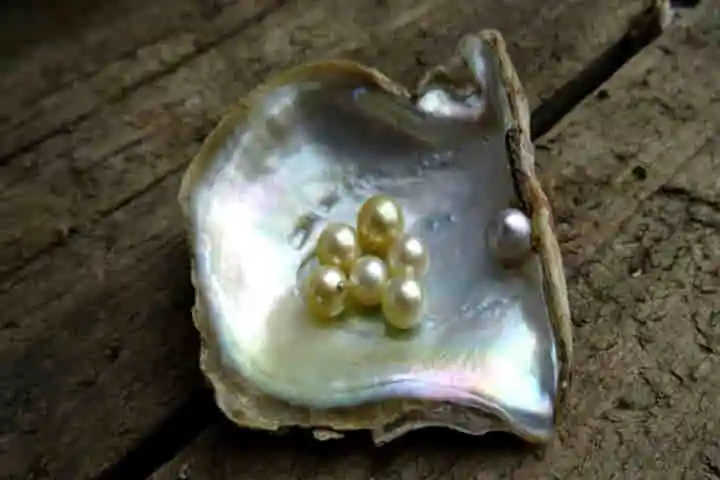The beautiful pearls were always an enigma for the scientists not for its aesthetics but how they were round and symmetrical in shape while being formed around a sand grain or debris which were irregular in shape. Finally, this mystery has been solved as a team of researchers have found that it is through a complex procedure that oysters, mussels and other mollusks achieve this according to an article in sciencenews.org.
Pearls are formed when a mollusk protects itself against an irritant trapped inside it by wrapping around it layers of protein and mineral which are smooth. This is called nacre. Even though every new nacre layer is spread over an asymmetrical centre, it copies the previous one exactly while it smooths out the irregularities resulting in the round shape.
This analysis was published last month on 19th in the Proceedings of the National Academy of Sciences.
Commenting on nacre, Australian National University’s biochemist, Laura Otter said: “Nacre is this incredibly beautiful, iridescent, shiny material that we see in the insides of some seashells or on the outside of pearls.”
Otter and her colleagues found that the twin capabilities of the mollusk ensure the symmetrical growth of the pearl. The layers while correcting the deviation in the form, block it from appearing in the subsequent layers.
Further, the animal also regulates the thickness of the nacre layer. Thus a thick one is covered subsequently with thinner ones. Averaging out the thickness, this gives the pearl a perfectly round and uniform look.
For the purpose of their study, scientists chose keshi pearls which were collected from Akoya pearl oysters (Pinctada imbricata fucata) from a coastal pearl farm in eastern Australia. Using a diamond wire saw, they cut the pearls into cross sections. This was followed by polishing them and using Raman spectroscopy to study them – allowing them to study its attributes through a non-destructive method. The pearl used for the study had 2,615 layers, which were deposited over 548 days.
Also read: Only one protein separates the Queen Ant from the rest
Analysis of the variations in the layers thickness brought to light what is called pink noise or 1/f noise which means that though events appear to be random they are actually connected. So even though layers of nacre of varied thickness may seem random, they are in fact dependent on the thickness of the previous layers.
The co-author of the study, Robert Hovden, who is a materials scientist and engineer at University of Michigan stated that pink noise also crops up in classical music and even when monitoring heartbeats and brain activity. He said, these phenomena “belong to a universal class of behaviour and physics”.
The scientists have reported for the first time “that nacre self-heals and when a defect arises, it heals itself within a few [layers], without using an external scaffolding or template,” said Pupa Gilbert. Gilbert, who wasn’t involved in the study and is a physicist studying biomineralization at the University of Wisconsin added: “Nacre is an even more remarkable material than we had previously appreciated.”
Also read: Tiny-brained spider amazes scientists with its web designs
Making a significant observation about nacre, Otter said: “These humble creatures are making a super light and super tough material so much more easily and better than we do with all our technology.” In fact nacre, which is composed of calcium, carbonate and protein, is “3,000 times tougher than the materials from which it’s made of”.
The latest study according to Hovden could lead to “the next generation of super materials” like solar panels which are more energy-efficient or materials that are resistant to heat and tough for use in spacecraft.




















